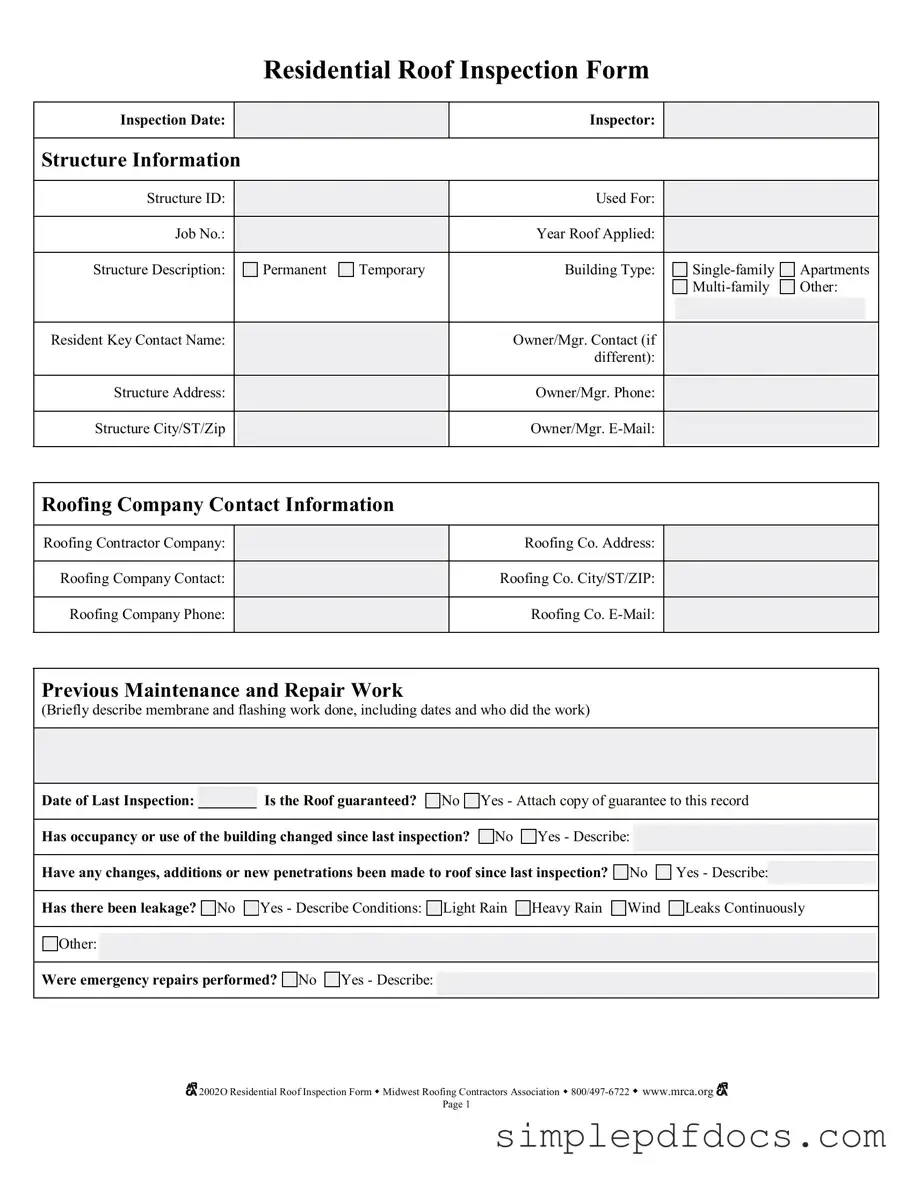The Roof Inspection Form serves as a critical tool for assessing the condition of a residential roofing system. It encompasses a variety of essential elements, beginning with fundamental information such as the inspection date, inspector's name, and structure details, including the type of building and its address. The form requires the identification of the roofing contractor, ensuring that the responsible party is noted for any future communications or follow-ups. It also prompts the inspector to document previous maintenance and repair work, providing a historical context that can be invaluable for understanding the roof's current state. Key questions regarding past inspections, guarantees, and any changes to the building's occupancy or structure are included, allowing for a comprehensive overview of the roof's history. The form features a detailed condition assessment section, where various aspects of the roof, from the interior roof deck to the exterior walls and drainage systems, are evaluated and rated as good, fair, or poor. Specific issues such as corrosion, cracks, and leaks are highlighted, with space for descriptions of any emergency repairs that may have been conducted. Additionally, the form encourages the inclusion of photographic evidence, which can enhance the documentation process. This structured approach not only aids in identifying existing problems but also helps in planning for necessary maintenance or repairs, ultimately contributing to the longevity and safety of the roofing system.
